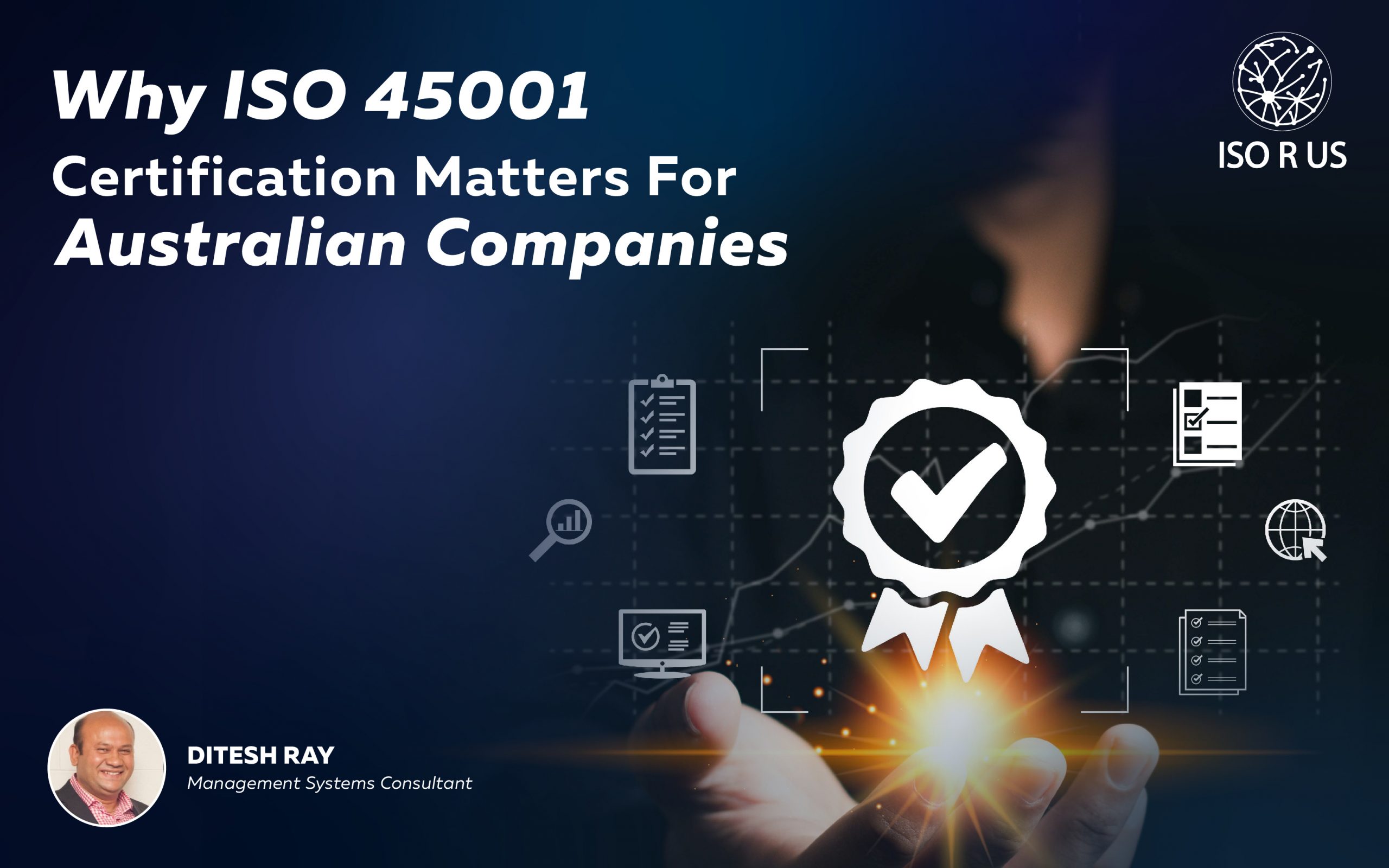Maintaining a safe and healthy workplace is an ethical as well as a legal necessity in today’s global corporate environment. More and more companies are realizing the need for a safe work environment for their employees, and as a result, they are looking to globally accepted standards such as ISO 45001 to help them manage the risks to their employee’s health and safety on the job.
The significance of having an ISO 45001 certification in the context of Australia, with its strict workplace safety rules, is immense. Let’s learn about why ISO 45001 Certification in Australia matters for companies.
Understanding ISO 45001 certification:
Organizations can form, operate, function, and enhance their occupational health and safety management system (OH&S MS) as per ISO 45001, which is a global standard. Its objective is to facilitate employers in taking proactive steps to avoid the dangers of health and safety in their workplaces.
Ensuring Compliance with Laws and Regulations:
Workplace safety in Australia is governed by many state and federal laws. These include the Work Health and Safety Regulations 2011 and the Work Health and Safety Act 2011 (WHS Act).
Companies are required by the law to ensure their employees’ health and safety according to the aforementioned regulations. Such legal criteria and providing a structured approach for managing OH&S risk exposure are both demonstrated by getting an ISO 45001 certification.
Enhancing Workplace Safety Culture:
Through its focus on employee participation, mutuality, and empowerment, ISO 45001 helps develop a culture of safety within organizations. The workers are well equipped to understand and follow safety instructions as well as detect dangers when there is two-way communication, comprehensive training and active worker participation.
An excellent safety culture is likely to improve the employees’ spirit and productivity and reduce the possibility of accidents. That’s why Expert advice adapted to regional standards and business requirements is provided by an ISO consultant who streamlines the process.
Enhancing the Credibility and Reputation of the Company:
Australian businesses get both at-home and international recognition and admiration when they get an ISO 45001 certification. Employees, suppliers, investors, and authorities will all interpret this as an indication that the company regards its employees’ well-being. These may lead to a competitive advantage, stronger business links, and a more trustworthy society.
Risk Management and Cost Reduction:
The objective of this guideline is to assist companies in eliminating OH&S incidents by identifying, evaluating and controlling OH&S risks in an organized way. Due to this precautionary measure, the employees are protected while avoiding operational disturbances, insurance fees and any legal claims. Often, it is cheaper to invest in prevention than to pay for the damages that have already happened.
Supply Chain Management and Market Access:
Adherence to international standards becomes more relevant for Australian companies as the global supply chains get more and more interconnected. To carry out business with MNCs or to access markets that have high-level OH&S management, the certification of ISO 45001 is one of the requirements. Australian businesses are seen as socially responsible and new opportunities are also opened up by putting policies in place that follow international standards.
Conclusion
Australian businesses that are mindful of their employees’ well-being should first get ISO 45001 certification. Beyond compliance with regulation, organizations can achieve a better working environment culture, company image and risk reduction through a systematic OH&S management plan.
With the current high-speed and competitive business world, the ISO 45001 certification is one worth pursuing for Australian firms. By making use of ISO consulting services, Australian businesses may complete the certification process while staying in line with international regulations and standards.
Also Read: How to Prepare for an ISO 45001 Audit in Australia: A Comprehensive Guide

